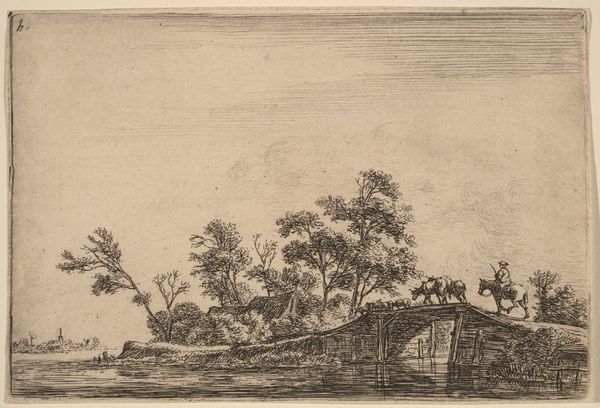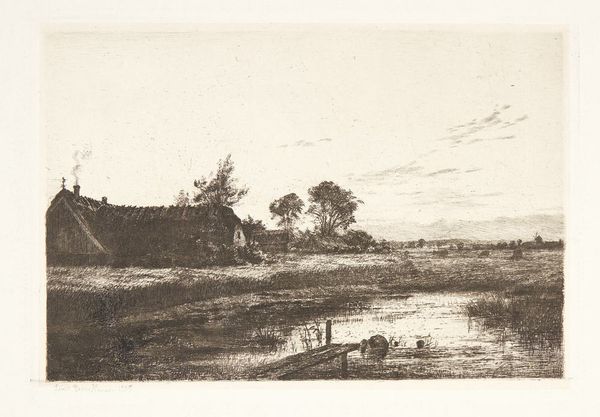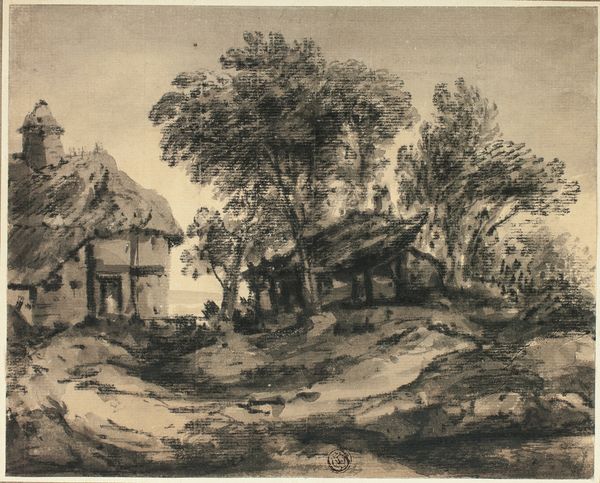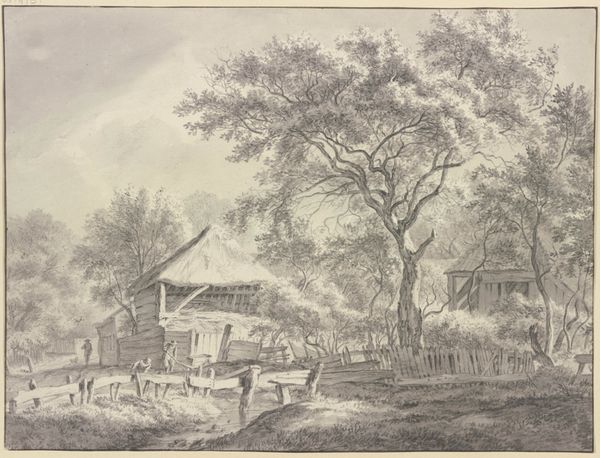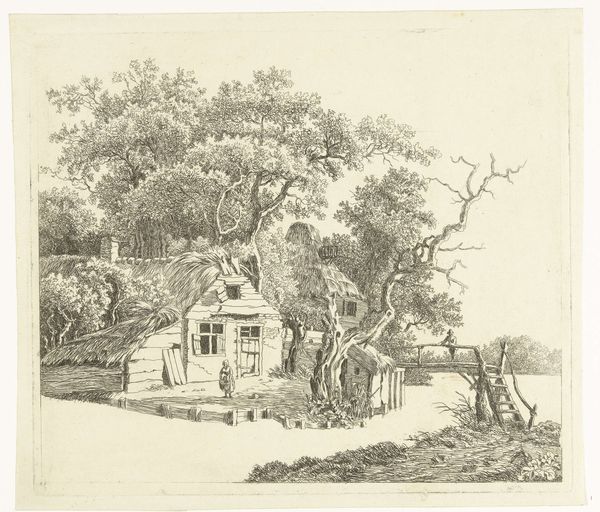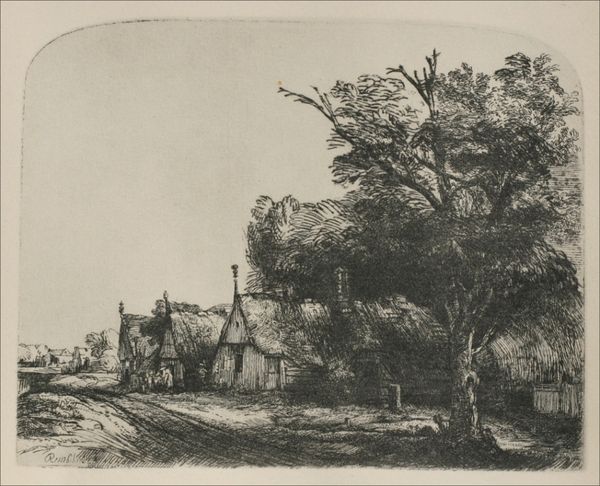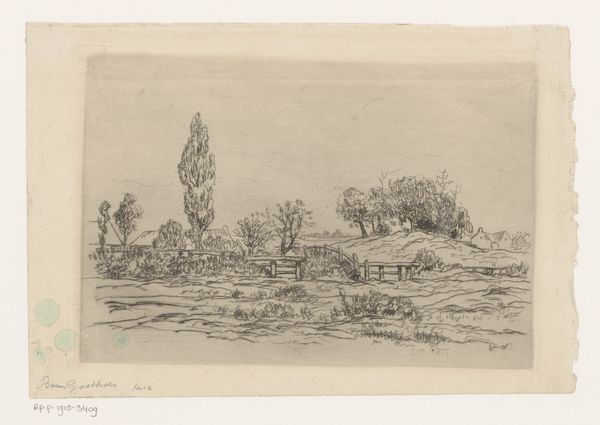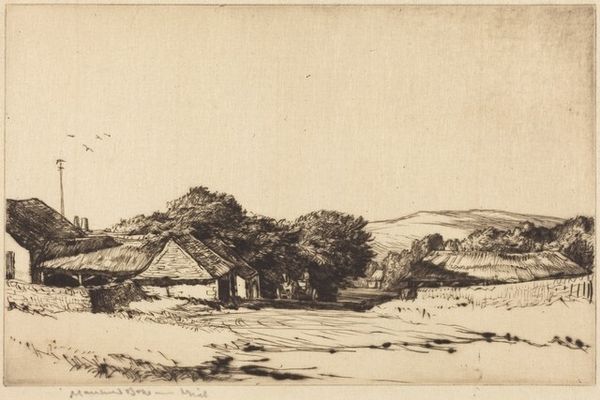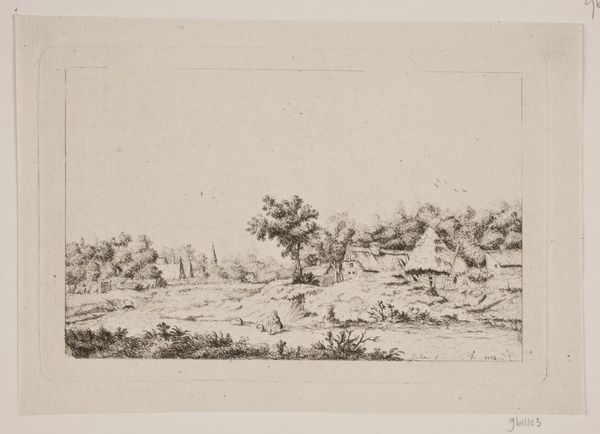
print, etching
#
dutch-golden-age
# print
#
etching
#
landscape
#
etching
#
realism
Dimensions: 13 x 16 cm
Copyright: Public domain
Curator: Right, let’s take a look at this little gem. We have before us Rembrandt van Rijn’s etching, “A Cottage with White Pales,” created in 1642. It's a small print, just a few inches in each dimension, made using etching techniques. Editor: Immediately, what strikes me is its stillness. There's a real quietude about it. The simple cottage, nestled between the trees... it feels like a place you could just breathe. Curator: Yes, Rembrandt returns time and again to images of farmhouses. This, however, shows how carefully chosen rural imagery could contribute to the creation of Dutch national identity at a time of emerging nationhood. The cottage imagery seems carefully planned here to promote ideas about a stable and sustainable existence. Editor: It’s funny you mention planning, because when I look at it I just think, nature. Rembrandt has this wonderful ability to suggest immense detail with the lightest touch. The way he captures the texture of the trees, the reflection in the water – it’s like he’s transcribed a living, breathing scene. The very dark marks contrasted with empty paper sections create the illusion that the air vibrates above the land. Curator: And that "lightness of touch", as you put it, allows us to see into the lives of ordinary people within the drama of socio-economic transformation. Through prints such as this one, his etching process was accessible to more people than ever. He's building a shared cultural vocabulary. It's art, but it's also a powerful tool for communication. Editor: I guess what resonates for me is that this work offers a reminder that there's a unique beauty to be found in ordinary things. Something simple, something very close. And the scale of the print, really makes the view a privilege to the beholder. The detail rewards extended scrutiny. It makes you think, what if I lived there? What would I be doing right now? Curator: I’m struck again by the radical notion that we have in front of us not simply art for art's sake, but a visual form that also acts a record of national ideas, values and ways of life. Editor: Well, it’s interesting how it pulls us in different directions! But ultimately, it’s a simple yet potent image that reminds us about looking closer to the familiar elements in our lives. Curator: A vital contribution to national conversations about identity and stability.
Comments
No comments
Be the first to comment and join the conversation on the ultimate creative platform.


